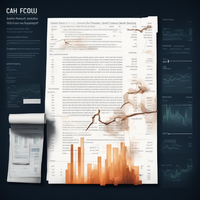Dodd-Frank Act

The Dodd-Frank Act, officially known as the Dodd-Frank Wall Street Reform and Consumer Protection Act, is a significant piece of legislation in banking regulation. This act was signed into law by President Barack Obama in 2010, in response to the financial crisis that occurred in 2008. The objective of the Dodd-Frank Act is to strengthen the regulatory framework governing banks and other financial institutions, with the goal of preventing another financial crisis and protecting consumers.
Key Provisions of the Dodd-Frank Act:
Financial Stability Oversight Council (FSOC): The FSOC was established under the Dodd-Frank Act to identify and address systemic risks within the financial system. It consists of representatives from various regulatory agencies and aims to enhance coordination among regulators.
Volcker Rule: Named after its proponent Paul Volcker, this rule restricts banks from engaging in proprietary trading or owning hedge funds or private equity funds. Its purpose is to limit risky speculation by banks using customer deposits.
Consumer Financial Protection Bureau (CFPB): The CFPB was created as an independent agency within the Federal Reserve System to protect consumers in their interactions with financial institutions. It has authority over mortgages, credit cards, student loans, and other consumer products.
Enhanced Regulatory Requirements: The Dodd-Frank Act introduced enhanced regulations for large banks considered "systemically important," including higher capital requirements and stress testing procedures.
Title II - Orderly Liquidation Authority: This provision gives regulators a mechanism for orderly liquidation of failing large nonbank financial companies if their failure poses a threat to economic stability.
Derivatives Regulation: The act imposes stricter regulations on derivatives trading by requiring standardized contracts be traded on regulated exchanges or electronic platforms called swap execution facilities (SEFs).
Credit Rating Agencies Oversight: The Dodd-Frank Act established the Office of Credit Ratings within the Securities and Exchange Commission (SEC) to oversee credit rating agencies. It aims to improve their accountability and transparency.
Whistleblower Protections: The act includes provisions to protect individuals who report fraudulent activities or securities law violations. Whistleblowers may be eligible for monetary awards if their tips lead to successful enforcement actions.
Impact of the Dodd-Frank Act:
The implementation of the Dodd-Frank Act has had a profound impact on the banking industry, financial markets, and consumers. Here are some key observations:
- Increased Regulatory Compliance: Banks and financial institutions must comply with numerous new rules and reporting requirements, which have increased compliance costs.
- Strengthened Financial System: The act has improved overall stability in the financial system by imposing stricter regulations on banks, enhancing oversight, and reducing risky practices.
- Consumer Protection: The creation of CFPB has helped protect consumers from abusive practices in mortgages, credit cards, and other financial products.
- Debate Over Effectiveness: There is ongoing debate about whether the legislation has achieved its intended goals or if it has stifled economic growth due to regulatory burdens placed on small banks.
Overall, the Dodd-Frank Act represents a comprehensive set of reforms aimed at preventing another financial crisis and protecting consumers. It continues to shape banking regulations as regulators refine its provisions through rulemaking processes.
Sponsored
Sponsored
Sponsored
Explore More:

Operational Risk
Operational risk is the potential for loss resulting from inadequate or failed internal...

Market Risk
Risk management in banking is a critical aspect of the banking industry. Managing...

Credit Risk
Risk management in banking is a critical aspect of the banking industry. Managing...

Risk Management in Banking
Risk management in banking is a critical aspect of the banking industry. Managing...

Glass-Steagall Act
The Glass-Steagall Act, also known as the Banking Act of 1933, was an...

Basel Accords
Banking regulations refer to the laws, rules, and guidelines imposed by regulatory authorities...

Banking Regulations
Banking regulations refer to the laws, rules, and guidelines imposed by regulatory authorities...

Cash Flow Statement
The cash flow statement is an important financial statement for banks as it...

Income Statement
The income statement is an essential component of a bank's financial statements. It...

Balance Sheet
The balance sheet is one of the most important financial statements used by...

Bank Financial Statements
Bank financial statements provide a comprehensive overview of a bank's financial performance and...

Online and Mobile Banking
In today's rapidly evolving technology landscape, the banking industry has undergone a significant...

Credit Cards
Credit cards are one of the most prominent banking products offered by financial...

Understanding Different Types of Bank Loans: Features and Benefits for Personal and Business Financing
Loans are a core offering of banking institutions, providing individuals and businesses with...

Checking Accounts
A checking account is one of the most common banking products used by...

Saving Accounts
Introduction In the world of banking, saving accounts are one of the most...